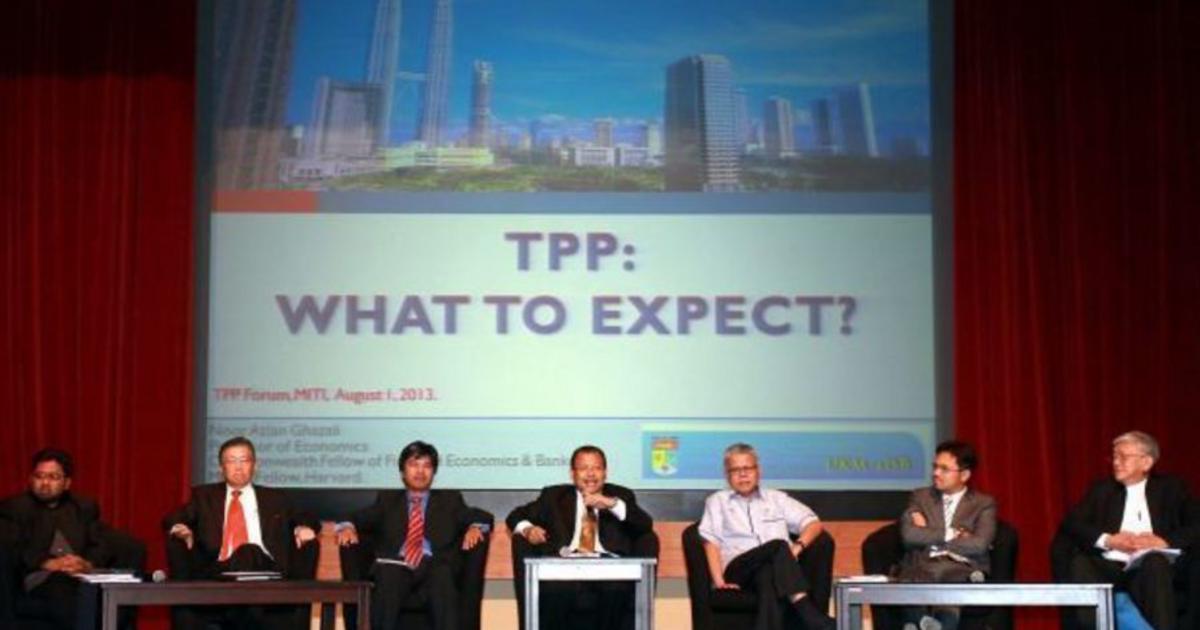

Contract
TPPA in layman’s terms, shorn of the jargon
over 9 years ago jayeffJoseph Francis
COMMENT The consensus of public opinion, as evident in the Court of Public Opinion in general and the social media in particular, favour the translation of the complicated 10,000 page Trans Pacific Partnership Agreement (TPPA) into layman’s terms, shorn of the technicalities and the jargon. Most people, even lawmakers and lawyers, confess that they are having difficulties in coming to grips with the language in the TPPA.
The TPPA is a multinational free trade agreement in which the
A cost-benefit analysis (CBA) of the TPPA would be released in two weeks time by the Ministry of International Trade and Industry (MITI.)
The jury would still be out in the coming weeks and months on human rights, a point raised by Suhakam, and the issue of investors being allowed to sue governments over public policy.
If the TPPA was controversial to begin with, the opposition to the agreement appears to be somewhat more mute since the release of the text of the Agreement. MITI has a note on its website http://www.miti.gov.my/ directing traffic to the New Zealand Government website http://www.mfat.govt.nz/Treaties-and-International... for the text of the Agreement.
The various stakeholders see the TPPA in terms of what it means to them oblivious to what it may spell out for the economy and the country.
Some examples would suffice to illustrate the point on stakeholders.
The Malaysian Trade Union Congress (MTUC), for one, has been unable to fathom the TPPA and has called for a dialogue with the Minister of Human Resources and the Minister of International Trade and Ministry on the agreement.
Malay interest groups, before the TPPA was released, were more concerned that the new trade agreement would not accommodate Article 153 in the Federal Constitution i.e. a reference in its 1st prong to a special position for the Orang Asal and Malays in four specific areas. They appeared less than impressed with assurances from the Minister of International Trade and Industry (MITI) Mustapa Mohamad that Putrajaya would not allow the TPPA to circumvent the Federal Constitution. Mustapa has a point in that it’s unlikely that the TPPA would feel challenged by Article 153 which has been enshrined in the Federal Constitution.
In any case, Article 153 has virtually fallen into disuse as much as the related New Economic Policy (1970-1990) from even shortly after it was introduced.
During the negotiations stage,
Putrajaya was unable to counteract
Aside from the four specific areas under the 1st prong of Article 153, the rest of the economy remains open and can accommodate the letter and spirit of the TPPA.
Briefly, the four specific areas are intake into the civil service, intake into institutions of higher learning owned by the government and training opportunities, government scholarships and opportunities from the government to do business. Patently, the Federal Constitution reserves a reasonable proportion in the four specific areas, by way of a special position, for the Orang Asal and Malays. Again, the component outside the reasonable proportion envisaged in the Federal Constitution remains open and thereby in line with the letter and spirit of the TPPA.
The, there’s concern in the medical community that patients, long used to cheaper generic drugs, would be saddled with expensive patent drugs under intellectual property rights and the right of manufacturers to recover the cost of research and development (R&D).
Here, there’s a long shadow being cast over the TPPA following a recent Supreme Court of India decision to deny patent rights in
The Supreme Court, in a decision which has worldwide implications, endorsed and echoed the World Health Organisation’s (WHO) stand that all 20,000 proteins are known to man and that no new drug was possible, thus knocking a big hole in the argument of drug companies that they are engaging in expensive R&D to come up with new drugs and should be allowed to recover their costs and compensate themselves accordingly through patent rights.